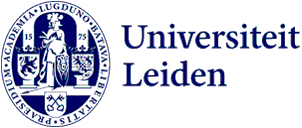Lecture | LIAS Lunch Talk Series
Hephthalites, Romans, and Arabs: the Grand Strategy of the Sasanian Empire
- Date
- Wednesday 13 March 2024
- Time
- Serie
- LIAS Lunch Talk Series
- Address
-
Matthias de Vrieshof
Matthias de Vrieshof 1-4
2311 BZ Leiden - Room
- Vrieshof 3 / 1.04 (Verbarium)
Abstract
Between the 500 & 630 CE, the empire that had dominated Central & West Asia since the third century, that of the Sasanians, went through fundamental changes in structure & substance. Initiated by a crushing defeat at the hand of the Hephthalites (or White Huns), the empire was forced to shift its focus to the west. With its concentration on Mesopotamia (MP Asurestan; later al-‘Iraq), the Sasanian strategy also was reoriented toward its western neighbours, the Roman or Byzantine empire, as well as the Arab population. Fundamental reforms, from military to financial, economic, & social restructuring, ensued. It also made the Sasanian empire more militaristic, eventually leading to a strategic plan to expel the Romans from the eastern Mediterranean, a goal they pursued in earnest in the early seventh century. This paper makes use of narrative, numismatic, archaeological, & epigraphic sources in order to describe & contextualise these changes, as well as to suggest their fundamental connection with later events, including the rise of Islam.”
About the speaker
Khodadad Rezakhani is a historian of late antique & early medieval Iran & West Asia, and the author of ReOrienting the Sasanians: East Iran in Late Antiquity (Edinburgh UP 2017) and the forthcoming Post-Sasanian: West Asia in the Early Islamic Period (OneWorld, 2025) & Forging a Silk Road: Travel, Trade, and Myth Making (Bloomsbury, 2026). He is currently a Researcher at LIAS & leads the Gerda Henkel Stiftung funded multi-year project, The Memory of Ruins: Ctesiphon & Baghdad.
